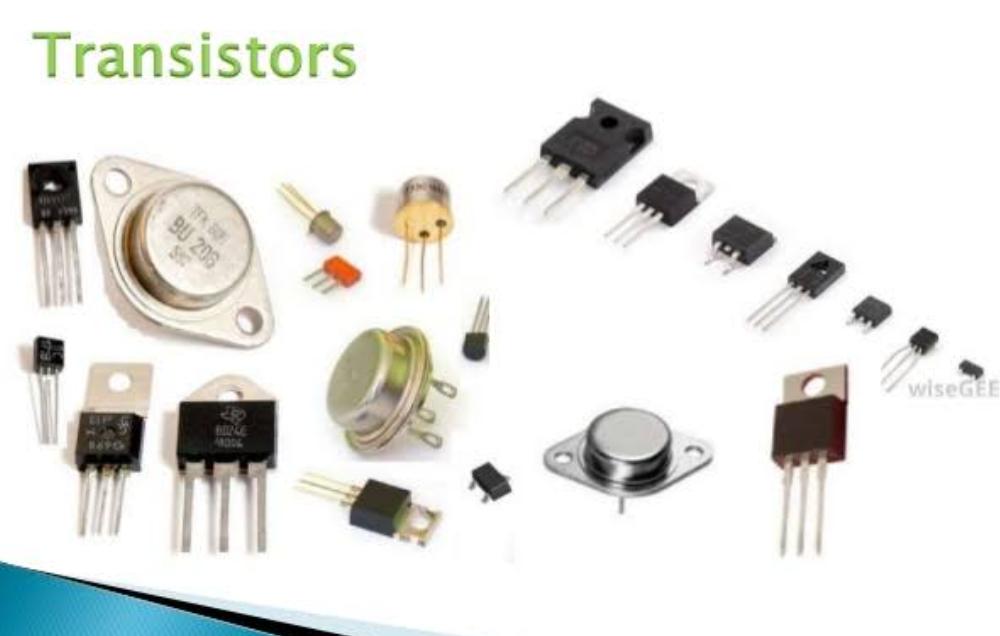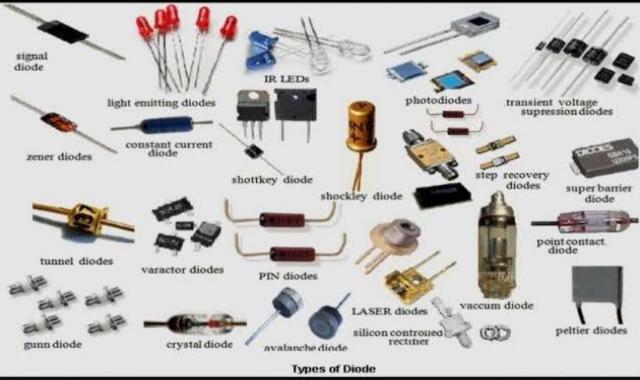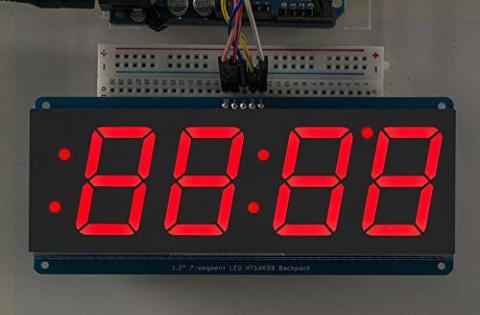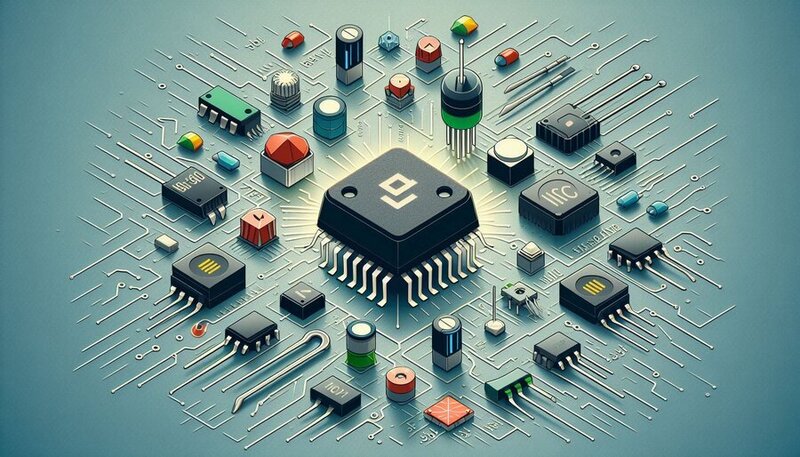Definition of Active components:
“Active components are those who has the ability to control flow of electrons either by using voltage or by using another current.”
Voltage-controlled devices are MOSFETs, vacuum tubes, while current-controlled devices are bipolar junction transistors which allow one current to control another.
Active components can be of different types like semiconductor there are various types of active devices like transistors, diodes, triodes, LEDs, plasma display battery etc.

Semiconductors Transistors Active components:
Transistors were invented in twentieth century which changed electronic circuits forever. A transistor is a semiconductor device used to amplify and switch electronic signals and electrical power. It’s an active component. Also read about passive components
There are huge variety of Transistors used in electronic circuit here is step by step classification. Click here If you want to see the difference between active and passive components.

A.) Voltage Controlled Transistors
Field-effect transistors (FET)
Field effect Transistors are voltage-controlled devices they are also called UJT as they are unipolar devices (having only one types of carrier either electrons or holes).
They are classified into JFETs and MOSFETs
MOSFET (metal-oxide-semiconductor- field-effect-Transistors) they are the most widely manufactured electronic component on Earth (also known as MOS transistor).
MOSFETs:
1.) PMOS (p-type MOSFETs) having p type channel
2.) NMOS (n-type MOSFETs) having n type channel
CMOS (complementary MOSFETs)
JFETs:
JFET (junction field-effect transistor)
1.) N-channel JFETs
2.) P-channel JFETs
B.) Current controlled devices:
BJT (Bipolar junction transistor)
Bipolar junction Transistors are current controlled devices where current at base controls collector current.
1.) NPN BJTs
2.) PNP BJTs
Other transistors and special purpose devices (active component):
There are many other Transistors some of them are given below.
Photo transistor: can detect light.
Power MOSFET: used to amplify power in high power circuits.
MuGFET (multi-gate field-effect transistor): they have multiple gates in a single device.
FinFET (fin field-effect transistor): it’s a multi gate device, it is built on a substrate such that the gate is placed on two, three, or four sides of the channel or wrapped around the channel. forms a double gate structure.
SIT (static induction transistor):
Static induction transistor (SIT) is a high power and high frequency transistor which offers advantages in obtaining higher breakdown voltages than a field-effect transistor (FET).
Composite transistors:
BiCMOS (bipolar CMOS): combination of CMOS and BJT.
IGBT (Insulated-gate bipolar transistor): used as an electronic switch for high efficiency and fast switching.
SCR (silicon controlled rectifiers):
passes current only when a sufficient control voltage is applied on its gate.
Thyristor:
These are bi-directional devices used to control the flow of AC current. It’s a SCR.
Silicon-controlled rectifier (SCR): passes current only after triggered by a sufficient control voltage on its gate.
TRIAC (Triode for Alternating Current): it’s a bidirectional SCR.
Types of Diodes:
There are various types of Diodes here are some most important and basic type of Diode with their symbol.

They Conduct electricity only in one direction.
Diode, rectifier, diode bridge
Schottky diode: ( also known as hot carrier diode) it’s a high frequency diode with lower forward voltage drop.
Zener diode: it passes current in reverse direction to provide a constant voltage reference. Used for voltage regulations.
Transient voltage suppression diode (TVS): they may be unipolar or bipolar. used to absorb high-voltage spikes.
Varactor or variable capacitance diode: It’s AC capacitance varies according to the DC voltage applied.
Tunnel diode: High-frequency diode based on quantum mechanical tunneling.
Light responsive diodes:
Laser diode: It’s a modified LED to give laser beam.
Light-emitting diode (LED): a diode that emits light.
Photodiode: conduct current in proportion to incident light.
Avalanche photodiode: It’s a photodiode with internal gain.
Photovoltaic cell: It produces voltage from light.
Hall effect sensor: It has ability to response to external magnetic field. magnetic sensor.
Types of Integrated Circuits (IC):
MOS integrated circuit (MOS-IC)
Hybrid integrated circuit (hybrid-IC)
Mixed-signal integrated circuit(ms-IC)
Three-dimensional integrated circuit (3D-IC)
Display devices:
LED display: There are various LED display which are used to display depending on digital inputs.
seven-segment display, sixteen-segment display, dot-matrix display etc.
LCD Display:
LCD stands liquid crystal display they are very power efficient, they produce a good quality image. The main difference between LED and LCD screen is that, in LED display each pixel has its own light source where’s LCD has a white light source which gets filtered by a filter to produce various colors.

Cathode-ray tube: The cathode-ray tube (CRT) is a vacuum tube that contains one or more electron guns and a phosphorescent screen. It is used to display images. It modulates, accelerates, and deflects electron beam(s) onto the screen to create the images.
Plasma display: A plasma display panel is a flat panel display that uses small cells containing plasma( ionized gas that responds to electric fields).
OLED: it is similar to an LCD, but each pixel generates its own light.
Micro-LED: It is very similar to OLED but it uses inorganic LEDs instead of organic. It does not suffer from screen burn. It cannot be made flexible or transparent.
Types of Power sources:
Battery: Can be acid or alkali or lithium-ion

Fuel cell: electrochemical type.
Power supply: converts AC to DC.
Photovoltaic device: It generates electricity from light.
Thermoelectric generator: It generates electricity by temperature gradients.
Electrical generator: It’s an electromechanical power source.
Piezoelectric generator: It generates electricity from mechanical strain.
You should watch this video for better understanding here
Active components are those who has an ability to control flow of electrons either by using voltage or by using another current, they require a power source.
What are Passive Electronic Components and their Classification

